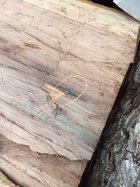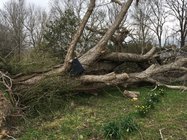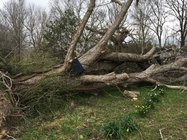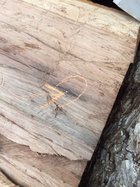Pretty sure I'm just going to toss the blank since it's nothing special (free wood, and worth every penny!), but it has me wondering.
I think I hit some embedded metal in the bowl I was turning this morning. Gouge was running smoothly down the inside of the bowl and suddenly stopped and would cut no more. Same thing for several more gouges and scrapers I tried. (Assuming I just dulled 4-5 tools).
So, if this was an important piece, is there anything that works well to get past this? Would a carbide tool do it? Lots of aggressive sanding?
Thanks all.
I think I hit some embedded metal in the bowl I was turning this morning. Gouge was running smoothly down the inside of the bowl and suddenly stopped and would cut no more. Same thing for several more gouges and scrapers I tried. (Assuming I just dulled 4-5 tools).
So, if this was an important piece, is there anything that works well to get past this? Would a carbide tool do it? Lots of aggressive sanding?
Thanks all.




